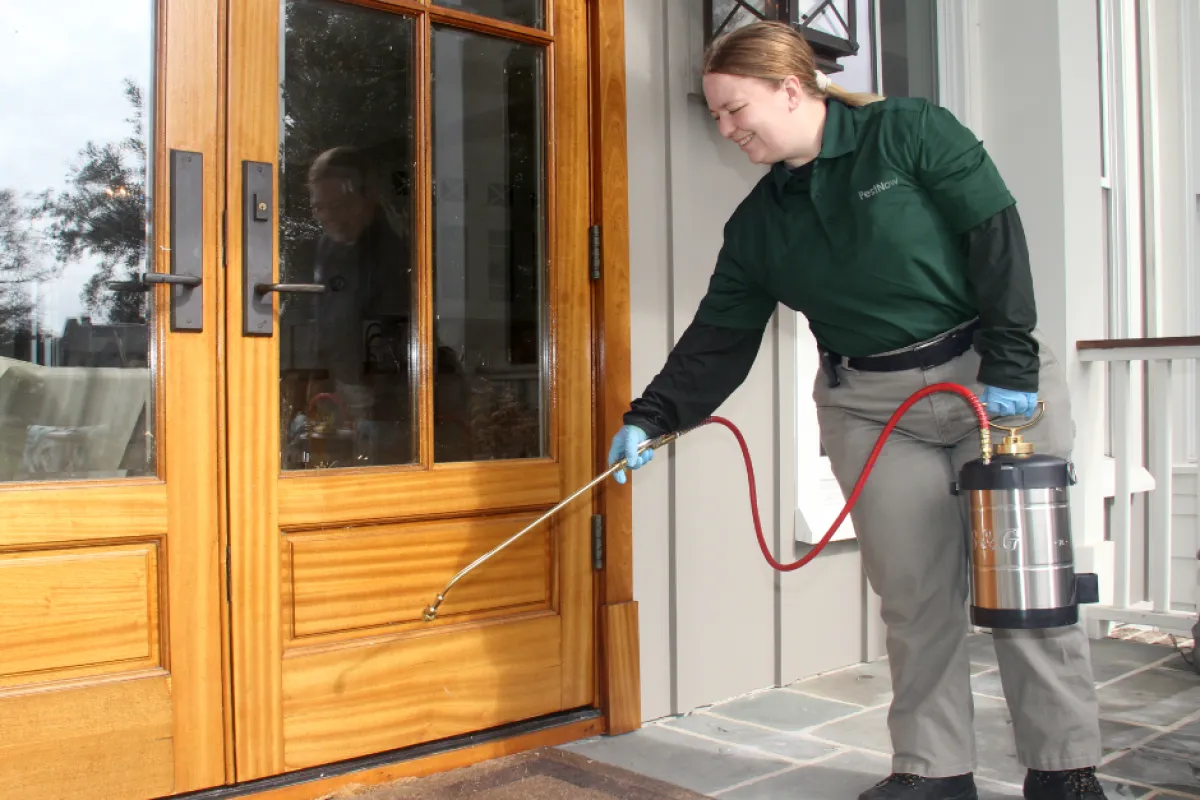Experienced A1 Exterminators Charlotte NC - Quick and Dependable Solutions
Experienced A1 Exterminators Charlotte NC - Quick and Dependable Solutions
Blog Article
Bed Insect Therapy Malfunction: Contrasting Chemical Vs. Non-Chemical Solutions
In the world of pest control, especially when managing the relentless issue of bed bugs, the option between chemical and non-chemical therapy options can be a critical one. Both techniques supply distinct advantages and downsides, affecting variables such as performance, safety and security factors to consider, and overall price. By analyzing the nuanced information of each method, a clearer understanding of which path to seek in addressing a bed bug infestation can be obtained.
Efficiency of Chemical Therapies
Chemical therapies for bed insect invasions have been commonly acknowledged for their powerful and rapid effectiveness in getting rid of these insects. When thinking about the performance of chemical therapies, it is critical to understand that they can provide a detailed and fast solution to a bed bug issue. Specialist pest control specialists usually depend on pesticides to target bed insects at different stages of their life process, consisting of nymphs, adults, and eggs. These chemicals generally work by interrupting the bed insects' nerves, causing paralysis and ultimate death.
Furthermore, chemical therapies have the benefit of supplying recurring effects, indicating that they can continue to eliminate bed pests even after the preliminary application. This recurring action is especially valuable in combating any kind of potential re-infestations. In addition, the rapid action of chemical therapies can bring alleviation to individuals encountering severe bed bug problems, allowing them to reclaim control of their living areas rapidly.
Security Issues With Chemical Solutions
One vital aspect that calls for cautious factor to consider when utilizing chemical remedies for bed insect therapy is making certain the safety of owners and the environment. Direct exposure to certain chemicals made use of in bed insect treatments can lead to respiratory system problems, skin irritation, or various other negative responses, especially in individuals with pre-existing problems or sensitivities.
Moreover, the ecological influence of chemical services is one more significant consideration. Some chemicals utilized in bed insect therapies might be damaging to beneficial bugs, wild animals, and environments if they seep into the soil or water supply. It is necessary to utilize chemical treatments sensibly, complying with security standards, and considering much less poisonous choices to minimize these risks and make certain the reliable and safe administration of bed pest infestations.
Advantages of Non-Chemical Strategies
Thinking about the prospective security concerns and ecological influence linked with chemical remedies for bed pest therapy, discovering non-chemical techniques offers an encouraging option with numerous distinct benefits. Non-chemical treatments are environmentally friendly, as they do not contribute to air or water air pollution, making them a sustainable selection for insect control.
Furthermore, non-chemical solutions can be effective in targeting bed insects, consisting of hard-to-reach areas where chemical therapies may not penetrate. Approaches such as warm therapy, vacuuming, from this source steam cleansing, and bed mattress coverings supply complete removal without the usage of damaging chemicals. In addition, non-chemical methods can be much less turbulent, requiring very little prep work and permitting for quicker reentry into treated locations. Generally, selecting non-chemical bed bug treatment methods not just prioritizes safety and ecological protection yet also ensures extensive and reliable insect control.
Limitations of Non-Chemical Treatments

In addition, non-chemical therapies frequently need numerous applications to achieve successful elimination. This can be taxing and might not always guarantee total elimination of all bed insects and their eggs, specifically in covert or hard-to-reach places.
Furthermore, the success of non-chemical treatments heavily counts on proper application and thoroughness, which can be challenging for individuals without expert knowledge. Insufficient application of non-chemical techniques might cause insufficient obliteration, leading to consistent infestations and the demand for added therapies.
Consequently, while non-chemical therapies have their benefits, it is necessary to acknowledge these limitations and consider them when identifying the most directory effective approach for managing bed bug invasions.
Price Contrast: Chemical Vs. Non-Chemical Options
Provided the constraints associated with non-chemical therapies, a necessary aspect to assess in the context of bed pest management is the price contrast between chemical and non-chemical choices. In comparison, non-chemical treatments like warm therapy or steam can be extra costly, with costs ranging from $1,000 to $6,000 for an entire home. While the first price of chemical treatments may appear reduced, numerous therapies may be required to fully eliminate the infestation, possibly boosting the general price.
Verdict

Considering the prospective safety and security concerns and environmental effect associated with chemical remedies for bed insect treatment, discovering non-chemical strategies presents an appealing choice with numerous distinctive advantages.Given the limitations associated with non-chemical treatments, an essential element to examine in the context of bed pest management is the cost comparison in between chemical and non-chemical alternatives. In comparison, non-chemical treatments like warm therapy or steam can be a lot more pricey, with prices varying from $1,000 to $6,000 for a whole home. While the preliminary expense of click reference chemical therapies might appear reduced, numerous treatments may be required to totally remove the invasion, possibly increasing the general price.In verdict, when comparing chemical and non-chemical bed insect therapy choices, it is important to think about effectiveness, safety, benefits, restrictions, and price.
Report this page